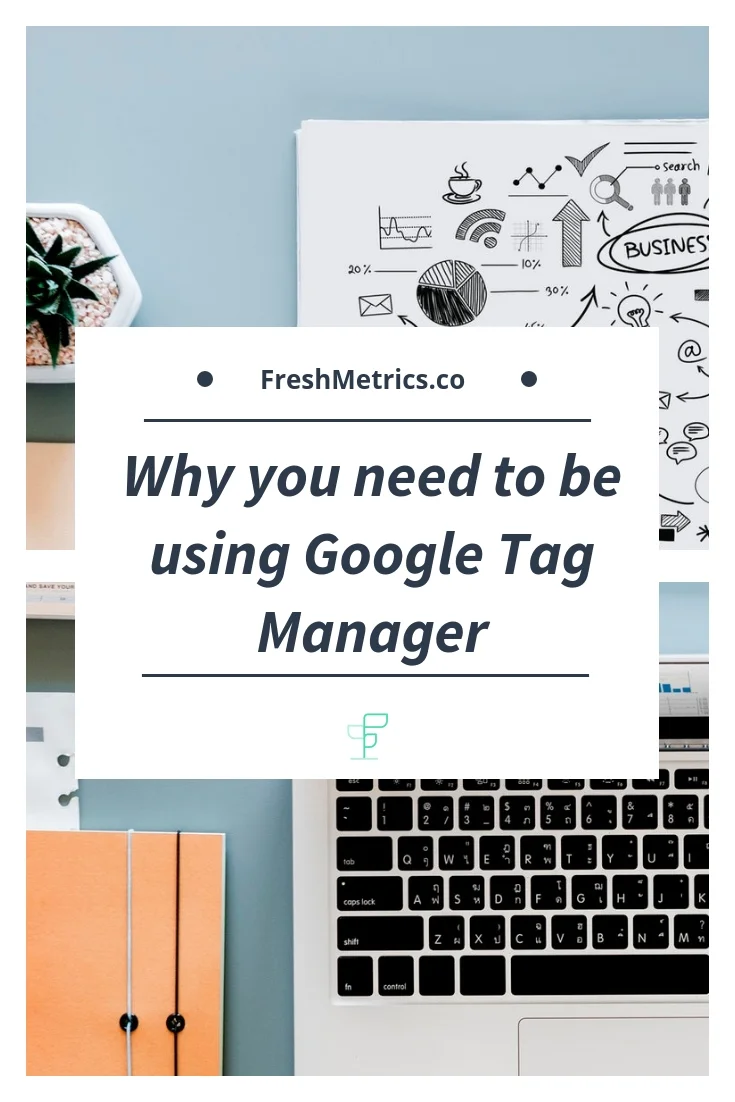Why you need to be using Google Tag Manager
You have Google Analytics implemented on your site! WooHoo!
This is amazing, congratulations you are ahead of many small business owners.
The important thing is not to stop there. What do I mean by this?
Well, this is what this post is all about. I want to share with you, why it's very important to use Google Tag manager to move beyond having the default Google Analytics code implemented on your site.
For starters, let me outline the great things that the default Google Analytics (GA) code gives you:
1) Visit and Visitor data
Right from the start, you will know how many people come to your site, the percentage that's new to your site vs. returning and how often they come back.
2) Traffic Source data
GA has done a fantastic job of being able to identify for you where your visitors are coming from. They will tell you if they came from your social media channels, organic or paid search, your email campaign, and/or referring sites.
3) Pages viewed data
When it comes to understanding what content your visitors are looking at, GA will let you know which pages were viewed the most, how long people spent on them, which pages people exited your site from, and so much more.
These are the main three buckets of information that you will get from the default GA implementation. You will also be able to add many other dimensions to your data analysis with the default implementation.
All great things! Yay!
But, there is so much more information you can get with leveling up from the default.
This is where Google Tag Manager (GTM) comes to the rescue!
GTM is what makes marketers (that's all small business owners) into developers. It works with GA and other tools to make the tracking of actions on your site easy to implement.
Using GTM, you can add the additional tags on your site that will give you more information on how users are navigating through your content.
Here are just a few examples of additional tracking that can be added to your site:
1) Form starts and completion
With some additional tracking, you will be able to know how many people actually start your forms and then complete it. You can also add tracking to see how they fill out certain questions if this is important information for you.
For example, perhaps you offer 4 different products and you want to understand which one is more popular. Tracking can be put in place to capture the information in the drop-down menu of your form where the user has to choose the product they are interested in.
2) Scroll page tracking
For those who have important information below the fold, it will be important to have an idea of how far your visitors actually scroll down the page.
If you find that your visitors are only scrolling to about 25% of your page and you have an important call to action about 75% down the page, you know that they are not seeing this and it could very well be impacting your conversion.
3) Call to Action tracking
You have important calls to action (CTAs) on your site and you need to understand which ones are getting the most clicks.
4) Video Viewing
Are visitors to your site watching your videos? Which ones get the most engagement? How long are people watching my videos? Getting answers to all these questions will help you spend the time, effort and money creating video content that your visitors like.
5) Enhanced Ecommerce
This is the big one. If you are a retail store, making sure you have Enhanced Ecommerce set up on your GA account is a must.
This great feature from Google gives you information related to your shopping cart. You will have an understanding of the kinds of items get the most views, which ones people add to their shopping carts and which ones are purchased the most.
There is a whole lot of other great information that retailers get from this and I'll do a whole separate post on this to dive deep into it.
These are only a few examples of what additional information you can get from moving beyond the basic implementation of Google Analytics with the help of Google Tag Manager. How much more tracking is added, will always depend on your business needs and the questions you need answers to.
If you are interested in understanding how you can benefit from moving beyond the default, I'm more than happy to help and offer a 30 min FREE discovery call. You can sign up here for that.
If you have already implemented Google Tag Manager, leave a comment below and share what cool things you are tracking and how it has been a game changer for your business.
As always...Happy Analyzing!
Hi, I’m Karla
I’m here to help small business understand and use their website data to take the guess work out of growing their business.
I’ll love to help you start using your valuable website data to help you grow your business, book a FREE 30 minute discovery call with me and let’s get started.


